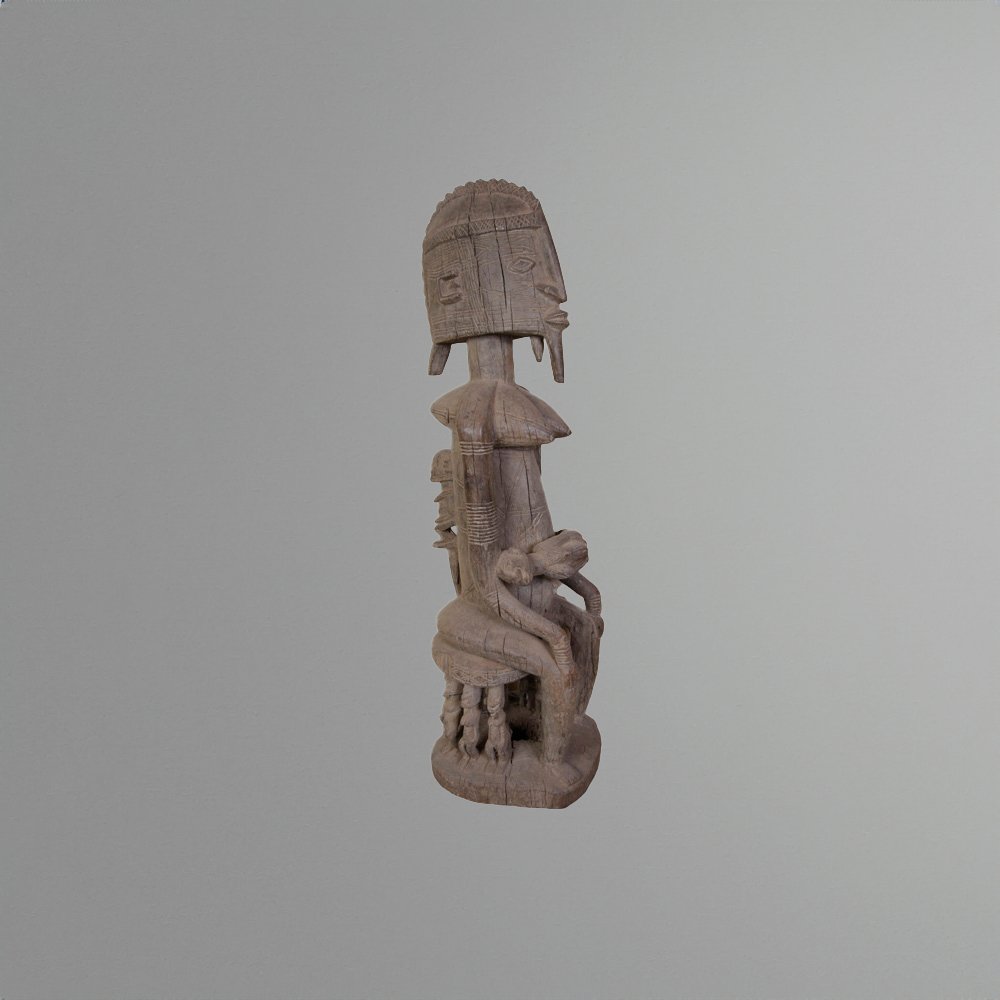
Masks
Statues
Bronze
Doors & Architecture
Beadwork
Taureg Art
Textiles & Other Objects

The Collection
-
African masks are used for dances and ceremonies, often worn in the ritual for a boy’s initiation into the tribe; some for exorcism of evil spirits; some to invoke rain and fertility; some to communicate with the spirit of the dead and draw off his nyama. The masker might seek to instill fear into enemies, raise his own courage, or repel evil spirits. For these purposes wild-animal masks were sometimes used.
-
There are two types of statues: religious and magical. The first group of statues are connected with birth, puberty, marriage, and death including both the ancestor spirits and the genii of nature. These usually have a closed form with no additional material like horn, nails, or shells added to them. The composition and frequently the facial expression manifest calm and dignity. The magical statues are more aggressive in their facial expressions. Often their attitudes suggest latent movement.
-
The Yourba tribe of Nigeria create some of the most beautiful beaded objects in the world. Hats, costumes and decorative figures are among the many pieces in this collection. The animal and mask designs play an important role in the history and beliefs of the Yoruba.
These intricately designed hats and costumes are worn by important chiefs of Yoruba kingdoms as a sign of his status in society.
-
These bronze castings are created using the lost wax method with the finest pieces found in Nigeria, Mali, Burkina Faso, Benin, Ivory Coast and Ghana. Among the many objects cast of bronze are warriors, icons, animals, gold weights, ancestors, elders, chiefs and fertility figures. The Dogon tribe of Mali honor their great horsemen who defended them from centuries of assailants. Since the form is molded in wax, the piece can be of great detail and design, limited only to the imagination of the caster. Great value is associated with the skill of design and artistry as they are all original one cast pieces.
-
African art does not always fit into stereotypical forms. Objects such as doors, support beams and beds are often decorated with tribal markings. These markings may represent traditional tribal beliefs, icons of ancestors, or tell stories of village history. These large and beautiful objects are well-worn pieces of African history and offer a rare addition to any collection.
-
The Tuareg, unlike other African peoples, do not have a tradition of creating figurative art. Because of their nomadic heritage, the Tuareg channel their artistic expressions into the embellishment of such utilitarian items as household furnishings and into the creation of such prestige pieces as swords and daggers and more private objects, including jewelry.
These artistic expressions are the work of the inadan, smiths who are found in all Turaeg groups. The male smiths (inadan) carve wooden implements, including bowls and forge metal, and the female smiths (tinaden) work leather and weave. Their craft specialty is hereditary, and their training takes place under the supervision of older male or female relatives.
-
We also offer a major collection of well worn utilitarian objects such as Baskets, Bowls, Weapons, Stools, Textiles, and other ritual or traditional objects. These Tribal objects were often used in daily life, or hidden in secret houses and used only for important ceremonies and rites of passage. Each piece offers an example of traditions and beautiful designs of people in Western and Central Africa.







